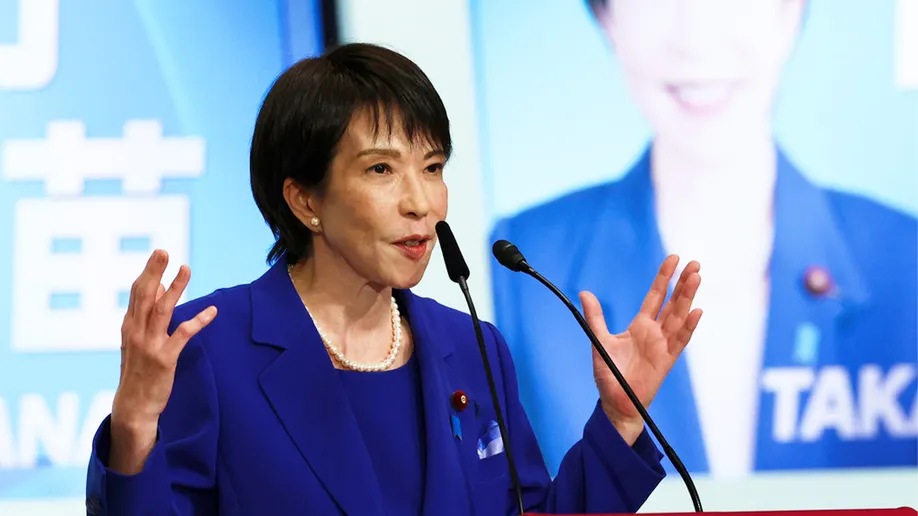Sanae Takaichi Poised to Make History as Japan’s First Female Prime Minister
Sanae Takaichi Poised to Make History as Japan’s First Female Prime Minister
By
Rachel Steinberg
Last updated:
October 20, 2025
First Published:
October 20, 2025

Photo: Fox News
Japan is on the verge of a historic political milestone as hardline conservative Sanae Takaichi is set to become the country’s first female prime minister. Following a landmark coalition agreement between the ruling Liberal Democratic Party (LDP) and the right-wing Japan Innovation Party (Ishin), Takaichi is now positioned to secure victory in the parliamentary vote scheduled for Tuesday.
The move comes after weeks of intense negotiations triggered by the collapse of the LDP’s 26-year alliance with Komeito, its long-time centrist partner. Ishin’s co-leader and Osaka governor Hirofumi Yoshimura confirmed on Monday that the party would formally support Takaichi’s leadership bid, effectively reshaping Japan’s political landscape.
A Coalition That Redefines Power Dynamics
The agreement between the LDP and Ishin delivers a combined total of 231 seats in Japan’s 465-member lower house. While this falls just two seats short of an outright majority, it is more than enough to ensure Takaichi wins the vote in parliament. In the event of a runoff, only a simple majority of ballots cast is needed — a margin Takaichi is widely expected to achieve.
Investors reacted swiftly to the news. The Nikkei 225 surged more than 2% in early trading, briefly topping 49,000 points for the first time in history. The yen weakened against the dollar, with analysts citing expectations of increased fiscal spending under Takaichi’s administration.
“Markets are pricing in the likelihood of a stimulus-driven government,” said Fumika Shimizu, strategist at Nomura Securities. “Takaichi’s economic stance signals continuity in Japan’s accommodative fiscal and monetary approach.”
Economic Agenda: Stimulus and Stability
Known for her fiscal dovishness, Takaichi has pledged to expand government spending and cut taxes to offset the impact of rising inflation. Her proposed economic package includes support for small businesses, infrastructure investment, and consumer subsidies aimed at stimulating domestic demand.
Takaichi has also been critical of the Bank of Japan’s recent decision to raise interest rates, arguing that tighter monetary policy could stall recovery. She has hinted at closer coordination between fiscal and monetary authorities to maintain economic momentum, especially as Japan’s GDP growth remains modest at 4.8% in the latest quarter.
However, her alliance with Ishin may temper some of these ambitions. Ishin’s leadership has long advocated for leaner government and fiscal restraint, suggesting potential policy friction ahead.
A Hawkish Voice on Security and Tradition
Beyond economics, Takaichi represents one of the most conservative wings of Japanese politics. She has repeatedly called for revising Japan’s pacifist postwar constitution to formally recognize the country’s Self-Defense Forces as a national military.
A frequent visitor to Tokyo’s controversial Yasukuni Shrine — viewed by many of Japan’s Asian neighbors as a symbol of wartime aggression — Takaichi has been vocal about strengthening Japan’s defense capabilities amid rising regional tensions, particularly with China and North Korea.
Domestically, she has stood firm on traditional family values, opposing policies such as allowing married women to retain their maiden names. Takaichi argues that such reforms undermine Japan’s cultural heritage and social cohesion.
What Comes Next for Japan
If confirmed, Takaichi will not only break the glass ceiling in Japanese politics but also inherit a complex policy environment shaped by slowing global demand, rising energy costs, and demographic challenges.
She will need to quickly form alliances beyond Ishin to pass an upcoming supplementary budget and ensure legislative stability. Analysts believe her leadership could mark a turning point in Japan’s political and economic direction — blending traditional conservatism with populist fiscal expansion.
As markets rally and political alliances shift, all eyes are now on Tokyo. The outcome of Tuesday’s parliamentary vote could redefine Japan’s governance and set the tone for its future on the global stage.
Popular articles
Subscribe to unlock premium content
Ikea’s Space10 Is Leading a Revolution in Food Economies

Ninja Van Grew from a Small Delivery Startup to a Billion Dollar Unicorn

Liechtenstein Built a Global Empire Through Rare Stamp Collecting

Ikea’s Space10 Is Leading a Revolution in Food Economies

Ninja Van Grew from a Small Delivery Startup to a Billion Dollar Unicorn

Ikea’s Space10 Is Leading a Revolution in Food Economies









